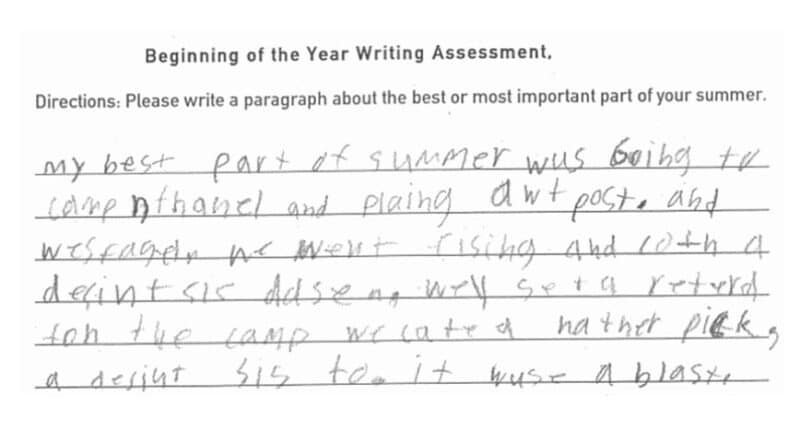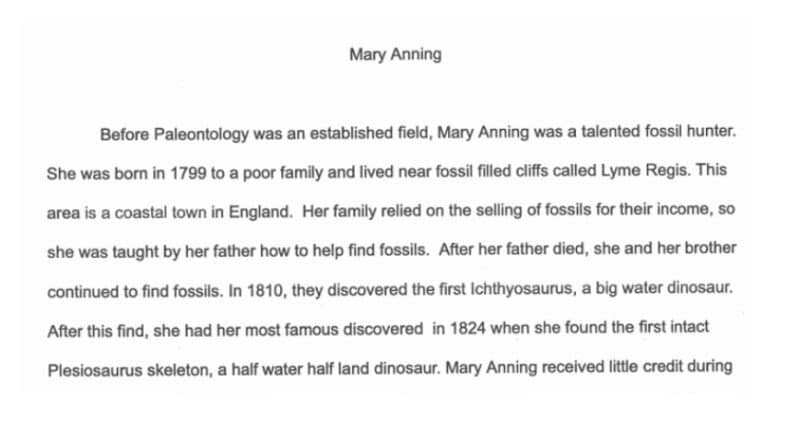In the Beginning…
It was the late ’90s and we had just acquired a program called ViaVoice. We were excited by the possibility of being able to capture ideas through speech. After two weeks of training, we were ready to test it out. However, the frustration and disappointment the students felt were palpable. We did not have the computing power to accomplish the task.
Fast forward ten years, and people were amazed at demonstrations of Dragon Naturally Speaking, a speech recognition software. The computers had the power to process voice, and Dragon had created the algorithm.
Jump to today, where the computing power we carry in our pockets outperforms what we had back then multiple times over. Dictation has become second nature as we talk to our computers, phones, and even houses. Artificial intelligence has made the accuracy of dictation amazing without the training that was previously needed. Now everyone can get ideas out quickly and accurately using their speaking vocabulary instead of their writing vocabulary.
The Importance of Assistive Technology (AT)
The National Center for Learning Disabilities estimates that 1-in-5 people have a learning disability while as few as 1-in-16 of those identified receive services in school, and millions more are undiagnosed. This is why technology plays a crucial role in leveling the playing field for individuals that struggle with reading. The growing desire for universal accessibility has leveled the playing field for all students if only we will allow it. The notion of using accommodations as cheating or unfair to others still exists, and this has become the most significant barrier to students with learning difficulties. Text-to-speech, dictation, spelling, and grammar checking are all integrated into programs like Microsoft 365. Students no longer need to qualify to have access to these tools. They must, however, be made aware of them and the appropriateness of their use.
Remediation is very important for students who are not reading at grade level early on. This remediation is essential to allow students to reach their maximum potential. We will begin to see a reduction in effectiveness as the students get older and other factors come into play (i.e., student motivation). Waiting until a student is struggling to introduce AT only adds additional frustration to an already frustrating situation. It takes time and energy to bring AT into the student’s academic toolbox, and to do that while trying to keep up in class is a monumental task.
But I Don’t Want to Be Different
Students with dyslexia often feel different from their peers as they struggle to accomplish what can seem to be so effortless for their friends. They see the introduction of AT as just another way to be called out, or as another thing to try and fail after a considerable amount of energy is expended. This is where the conversation between specialists, teachers, parents, and most importantly, the student is critical—demystifying a student’s diagnosis by helping them understand their profile, their strengths, and their challenges. Exposing students to different forms of assistive technology and showing them the benefits of using AT is also critical.
The Goal of Independence
Often in the K-12 realm, human accommodations and modifications can mold the material to the student’s abilities. Educators might change assignments or provide a human note-taker or reader to assist the student with access to the material, but this builds a dependence on another individual for that access. Higher Education institutions focus more on providing the tools necessary to access the material, and the student expectations are the same for every student. By helping students become independent with their assistive technology in high school, we offer a greater opportunity for a successful post-secondary transition.
A young senior with dyslexia was in a class where we spent time on the transition to college and the tools and strategies necessary to be successful. He was adamant that he was going to handle it himself and didn’t need help. He listened and argued throughout our conversations. He graduated and in the fall headed off to college. During a break, he came back and visited with his teachers. He was doing well and excited about the AT that was available to him. He had connected with the student disability services office at his college, and they were very helpful. While initially, it didn’t feel like he was receptive to input, it turned out that he was listening and took steps to launch into the college experience successfully.
The Challenge of Implementation and the Impact of Technology
With so many tools, strategies, and opinions about the use of assistive technology for our students with high incidence disabilities such as dyslexia, it can be difficult to get a program started. The biggest challenges we faced as we began were cost and what would work best. Our Lower School has a Festival of Nations each year. Every classroom picks a different country and researches the culture, food, sports, education, government, and geography. This research relied very heavily on the teacher curating websites and spending time with each student to assist with their research. The introduction of text-to-speech has allowed the students to become more independent in their searches and collection of information.
A middle school student with a significant dyslexia diagnosis struggled to get his ideas on paper. We spent time learning about dictation and gave him a headset to use. The result was dramatic.

Above is his beginning-of-the-year assessment.
Below is a writing assignment soon after learning dictation. There was some time spent with the teacher editing this work, but the fundamental work was done by the student. Being able to use speaking vocabulary instead of writing vocabulary made his writing come alive.

Moving Forward
As technology becomes more prevalent in our schools and our society, we owe it to our students to provide the best educational opportunities possible. Using technology to break down barriers of all types will become more commonplace, and lifelong student success will become more common.
Check out Groves Academy on:
LinkedIn | Facebook | YouTube | Twitter | Instagram
Share your news, success story, or meaningful moment about Groves through our online form.
